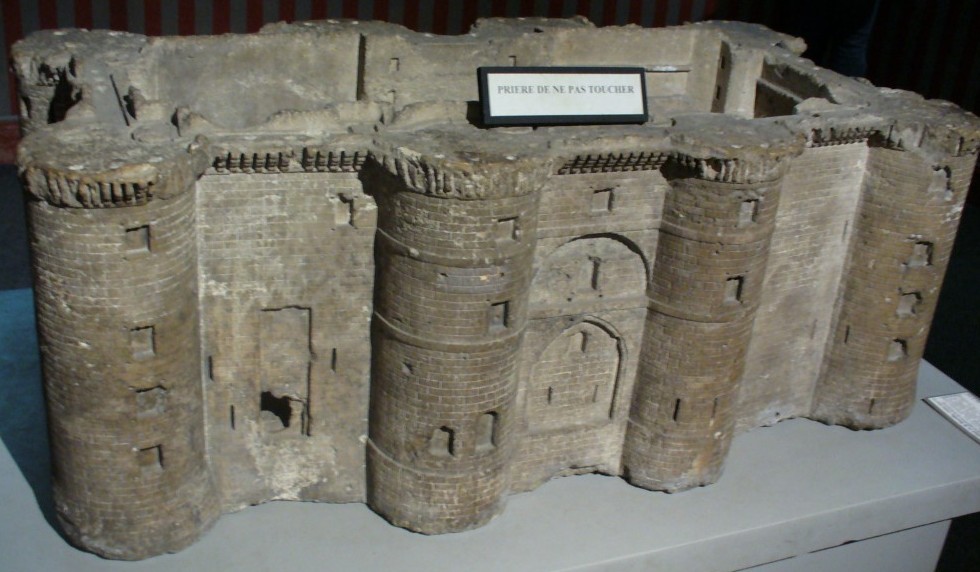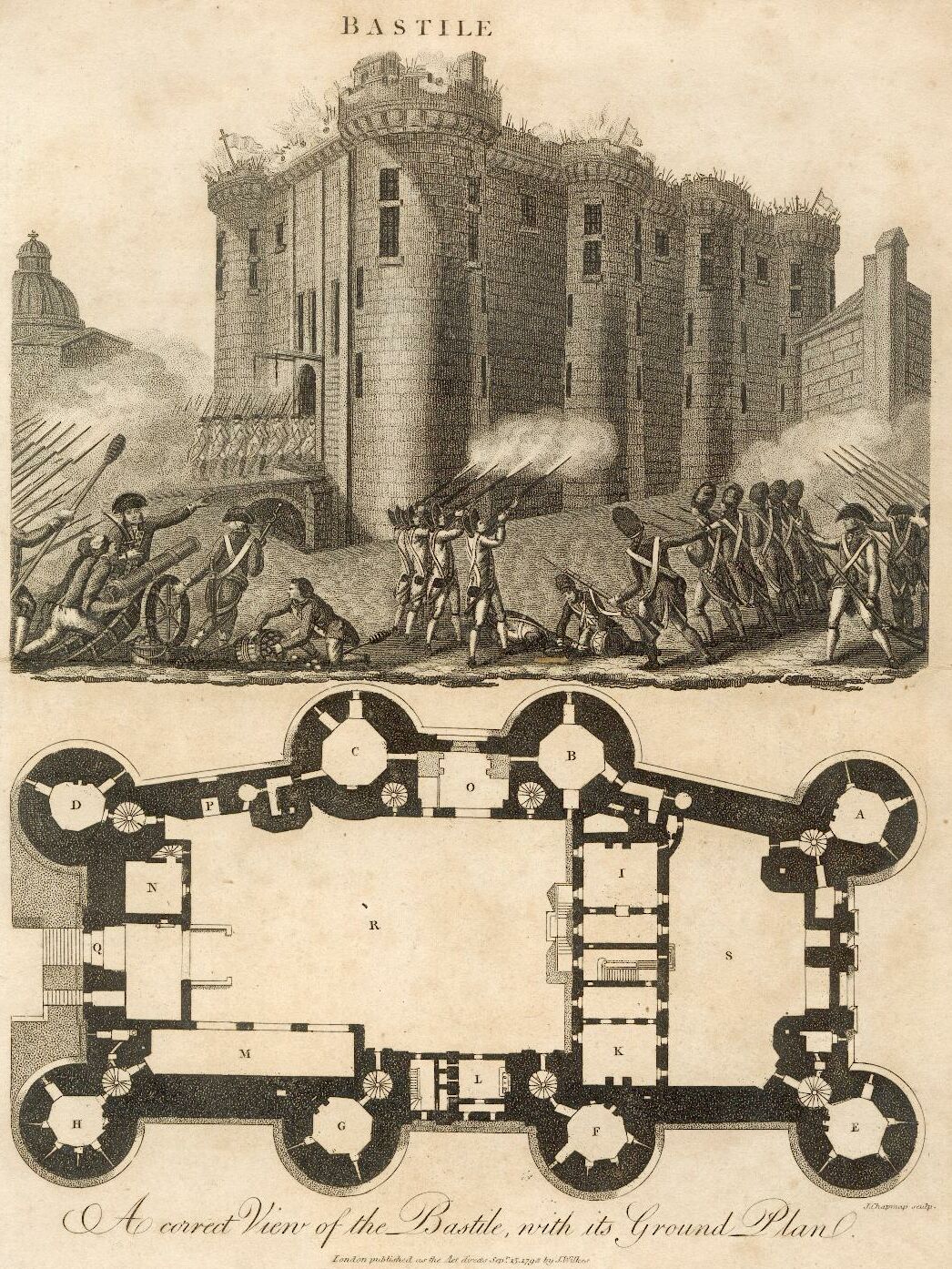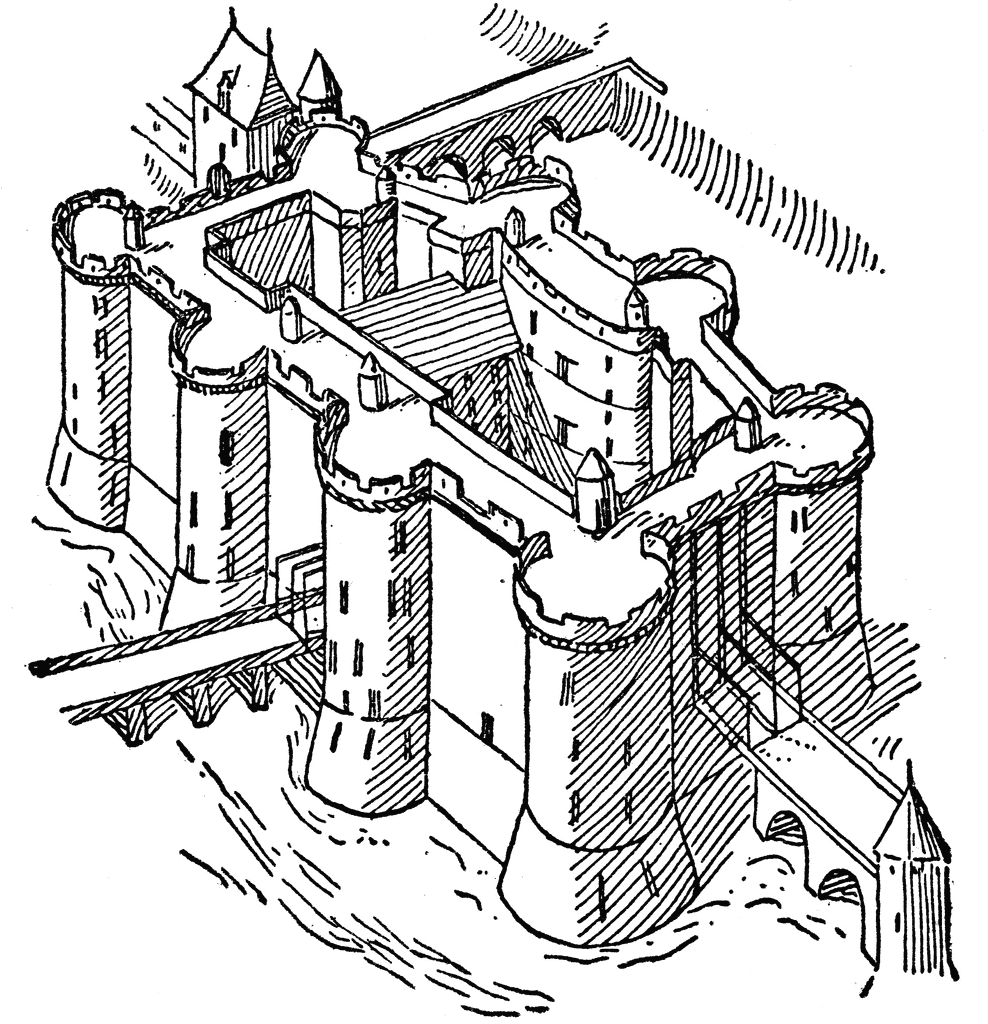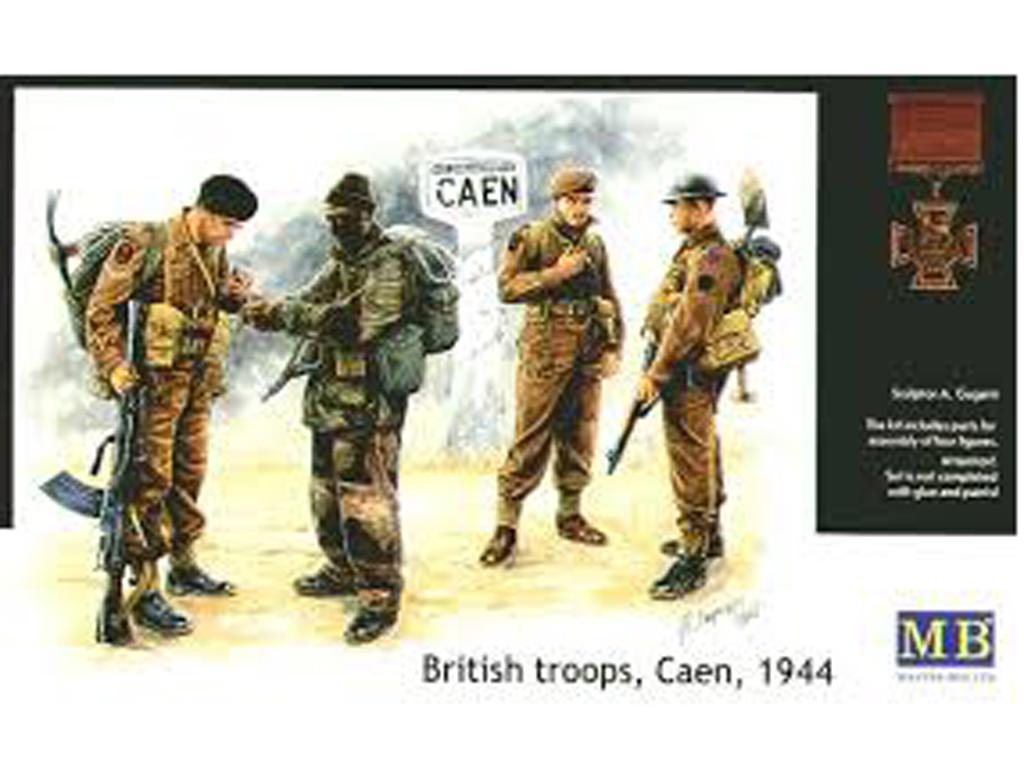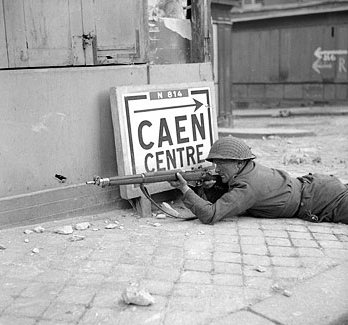Concise history from Wiki:
World War I (WWI or WW1), the First World War, was a 'global' war centred in Europe that began on 28 July 1914 and lasted until 11 November 1918. From the time of its occurrence until the approach of World War II, it was called simply the World War or the Great War, and thereafter the First World War or World War I. In America, it was initially called the European War. More than 9 million combatants were killed, a casualty rate exacerbated by the belligerents' technological and industrial sophistication, and tactical stalemate. It was one of the deadliest conflicts in history, paving the way for major political changes, including revolutions in many of the nations involved.

The war drew in all the world's economic great powers, which were assembled in two opposing alliances: the Allies (based on the Triple Entente of the United Kingdom, France and the Russian Empire) and the Central Powers of Germany and Austria-Hungary. Although Italy had also been a member of the Triple Alliance alongside Germany and Austria-Hungary, it did not join the Central Powers, as Austria-Hungary had taken the offensive against the terms of the alliance. These alliances were reorganised and expanded as more nations entered the war: Italy, Japan and the United States joined the Allies, and the Ottoman Empire and Bulgaria the Central Powers. Ultimately, more than 70 million military personnel, including 60 million Europeans, were mobilised in one of the largest wars in history.
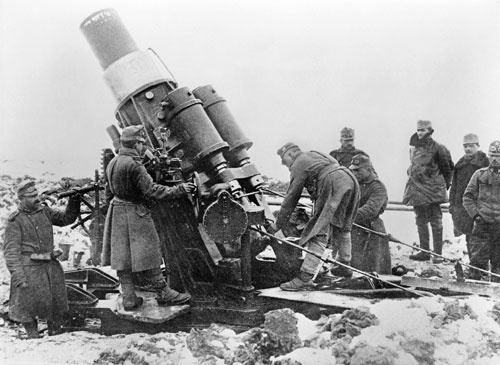
Although a resurgence of imperialism was an underlying cause, the immediate trigger for war was the 28 June 1914 assassination of Archduke Franz Ferdinand of Austria, heir to the throne of Austria-Hungary, by Yugoslav nationalist Gavrilo Princip in Sarajevo. This set off a diplomatic crisis when Austria-Hungary delivered an ultimatum to the Kingdom of Serbia, and international alliances formed over the previous decades were invoked. Within weeks, the major powers were at war and the conflict soon spread around the world.
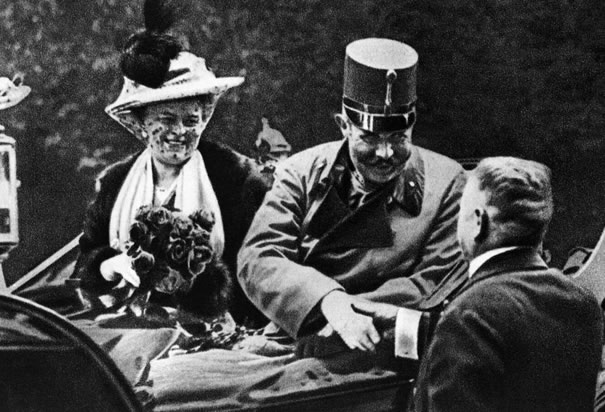
On 28 July, the Austro-Hungarians fired the first shots in preparation for the invasion of Serbia. As Russia mobilised, Germany invaded neutral Belgium and Luxembourg before moving towards France, leading Britain to declare war on Germany. After the German march on Paris was halted, what became known as the Western Front settled into a battle of attrition, with a trench line that would change little until 1917.

Meanwhile, on the Eastern Front, the Russian army was successful against the Austro-Hungarians, but was stopped in its invasion of East Prussia by the Germans. In November 1914, the Ottoman Empire joined the war, opening fronts in the Caucasus, Mesopotamia and the Sinai. Italy and Bulgaria went to war in 1915, Romania in 1916, and the United States in 1917.
The war approached a resolution after the Russian government collapsed in March 1917, and a subsequent revolution in November brought the Russians to terms with the Central Powers. On 4 November 1918, the Austro-Hungarian empire agreed to an armistice. After a 1918 German offensive along the western front, the Allies drove back the Germans in a series of successful offensives and began entering the trenches. Germany, which had its own trouble with revolutionaries, agreed to an armistice on 11 November 1918, ending the war in victory for the Allies.

By the end of the war, four major imperial powers—the German, Russian, Austro-Hungarian and Ottoman empires—ceased to exist. The successor states of the former two lost substantial territory, while the latter two were dismantled. The maps of Europe and Southwest Asia were redrawn, with several independent nations restored or created.Colonies in Africa and the east were divided amongst the victors.The League of Nations was formed with the aim of preventing any repetition of such an appalling conflict. This aim, however, failed with weakened states, renewed European nationalism and the German feeling of humiliation contributing to the rise of fascism. All of these conditions eventually led to World War II.
Some food for thought (Albeit Anglo-centric)
"Much of what we think we know about the 1914-18 conflict is wrong":
(BBC report, Historian Dan Snow)
No war in history attracts more controversy and myth than World War One.
For the soldiers who fought it was in some ways better than previous conflicts, and in some ways worse.
By setting it apart as uniquely awful we are blinding ourselves to the reality of not just WW1 but war in general. We are also in danger of belittling the experience of soldiers and civilians caught up in countless other appalling conflicts throughout history and the present day.
1. It was the bloodiest war in history to that point
Fifty years before WW1 broke out, southern China was torn apart by an even bloodier conflict. Conservative estimates of the dead in the 14-year Taiping rebellion start at between 20 million and 30 million. Around 17 million soldiers and civilians were killed during WW1.
Although more Britons died in WW1 than any other conflict, the bloodiest war in their history relative to population size is the Civil War, which raged in the mid-17th Century. A far higher proportion of the population of the British Isles were killed than the less than 2% who died in WW1. By contrast, around 4% of the population of England and Wales, and considerably more than that in Scotland and Ireland, are thought to have been killed in the Civil War.
2. Most soldiers died
In the UK around six million men were mobilised, and of those just over 700,000 were killed. That's around 11.5%. In fact, as a British soldier you were more likely to die during the Crimean War (1853-56) than in WW1.

3. Men lived in the trenches for years on end
Front-line trenches could be a terribly hostile place to live. Units, often wet, cold and exposed to the enemy, would quickly lose their morale if they spent too much time in the trenches.
As a result, the British army rotated men in and out continuously. Between battles, a unit spent perhaps 10 days a month in the trench system and, of those, rarely more than three days right up on the front line. It was not unusual to be out of the line for a month. During moments of crisis, such as big offensives, the British could occasionally spend up to seven days on the front line but were far more often rotated out after just a day or two.
4. The upper class got off lightly
Although the great majority of casualties in WW1 were from the working class, the social and political elite were hit disproportionately hard by WW1. Their sons provided the junior officers whose job it was to lead the way over the top and expose themselves to the greatest danger as an example to their men.
Some 12% of the British army's ordinary soldiers were killed during the war, compared with 17% of its officers. Eton alone lost more than 1,000 former pupils - 20% of those who served. UK wartime Prime Minister Herbert Asquith lost a son, while future Prime Minister Andrew Bonar Law lost two. Anthony Eden lost two brothers, another brother of his was terribly wounded, and an uncle was captured.
5. 'Lions led by donkeys'
This saying was supposed to have come from senior German commanders describing brave British soldiers led by incompetent old toffs from their chateaux. In fact the incident was made up by historian Alan Clark.
British commanders were thrust into a massive industrial struggle unlike anything the Army had ever seen
During the war more than 200 generals were killed, wounded or captured. Most visited the front lines every day. In battle they were considerably closer to the action than generals are today. Naturally, some generals were not up to the job, but others were brilliant, such as Arthur Currie, a middle-class Canadian failed insurance broker and property developer. Rarely in history have commanders had to adapt to a more radically different technological environment.
British commanders had been trained to fight small colonial wars; now they were thrust into a massive industrial struggle unlike anything the British army had ever seen. Despite this, within three years the British had effectively invented a method of warfare still recognisable today. By the summer of 1918 the British army was probably at its best ever and it inflicted crushing defeats on the Germans.

6. Gallipoli was fought by Australians and New Zealanders
Far more British soldiers fought on the Gallipoli peninsula than Australians and New Zealanders put together.
The UK lost four or five times as many men in the brutal campaign as its imperial Anzac contingents. The French also lost more men than the Australians. The Aussies and Kiwis commemorate Gallipoli ardently, and understandably so, as their casualties do represent terrible losses both as a proportion of their forces committed and of their small populations.
7. Tactics on the Western Front remained unchanged despite repeated failure
Never have tactics and technology changed so radically in four years of fighting. It was a time of extraordinary innovation. In 1914 generals on horseback galloped across battlefields as men in cloth caps charged the enemy without the necessary covering fire. Both sides were overwhelmingly armed with rifles. Four years later, steel-helmeted combat teams dashed forward protected by a curtain of artillery shells.

They were now armed with flame throwers, portable machine-guns and grenades fired from rifles. Above, planes, which in 1914 would have appeared unimaginably sophisticated, duelled in the skies, some carrying experimental wireless radio sets, reporting real-time reconnaissance.
Huge artillery pieces fired with pinpoint accuracy - using only aerial photos and maths they could score a hit on the first shot. Tanks had gone from the drawing board to the battlefield in just two years, also changing war for ever.
8. No-one won
Swathes of Europe lay wasted, millions were dead or wounded. Survivors lived on with severe mental trauma. The UK was broke. It is odd to talk about winning. However, in a narrow military sense, the UK and its allies convincingly won. Germany's battleships had been bottled up by the Royal Navy until their crews mutinied rather than make a suicidal attack against the British fleet. Germany's army collapsed as a series of mighty allied blows scythed through supposedly impregnable defences.
By late September 1918 the German emperor and his military mastermind Erich Ludendorff admitted that there was no hope and Germany must beg for peace. The 11 November Armistice was essentially a German surrender. Unlike Hitler in 1945, the German government did not insist on a hopeless, pointless struggle until the allies were in Berlin - a decision that saved countless lives, but was seized upon later to claim Germany never really lost.
9. The Treaty of Versailles was extremely harsh
The Treaty of Versailles confiscated 10% of Germany's territory but left it the largest, richest nation in central Europe. It was largely unoccupied and financial reparations were linked to its ability to pay, which mostly went unenforced anyway.
The treaty was notably less harsh than treaties that ended the 1870-71 Franco-Prussian War and World War Two. The German victors in the former annexed large chunks of two rich French provinces, part of France for between 200 and 300 years, and home to most of French iron ore production, as well as presenting France with a massive bill for immediate payment.
After WW2 Germany was occupied, split up, its factory machinery smashed or stolen and millions of prisoners forced to stay with their captors and work as slave labourers. Germany lost all the territory it had gained after WW1 and another giant slice on top of that.
Versailles was not as harsh as it was portrayed later by Hitler, who sought to create a tidal wave of anti-Versailles sentiment on which he could then ride into power.
10. Everyone hated it
Like any war, it all comes down to luck. You may witness unimaginable horrors that leave you mentally and physically incapacitated for life, or you might get away without a scrape. It could be the best of times, or the worst of times. Many soldiers enjoyed WW1. If they were lucky they would avoid a big offensive, and much of the time conditions might be better than at home.

For the British soldier there was meat every day - a rare luxury back home - cigarettes, tea and rum, part of a daily diet of more than 4,000 calories. Remarkably, absentee rates due to sickness, an important barometer of a unit's morale, were hardly above those of peacetime. Many young men enjoyed the guaranteed pay, the intense comradeship, the responsibility and a much greater sexual freedom than in peacetime Britain.


